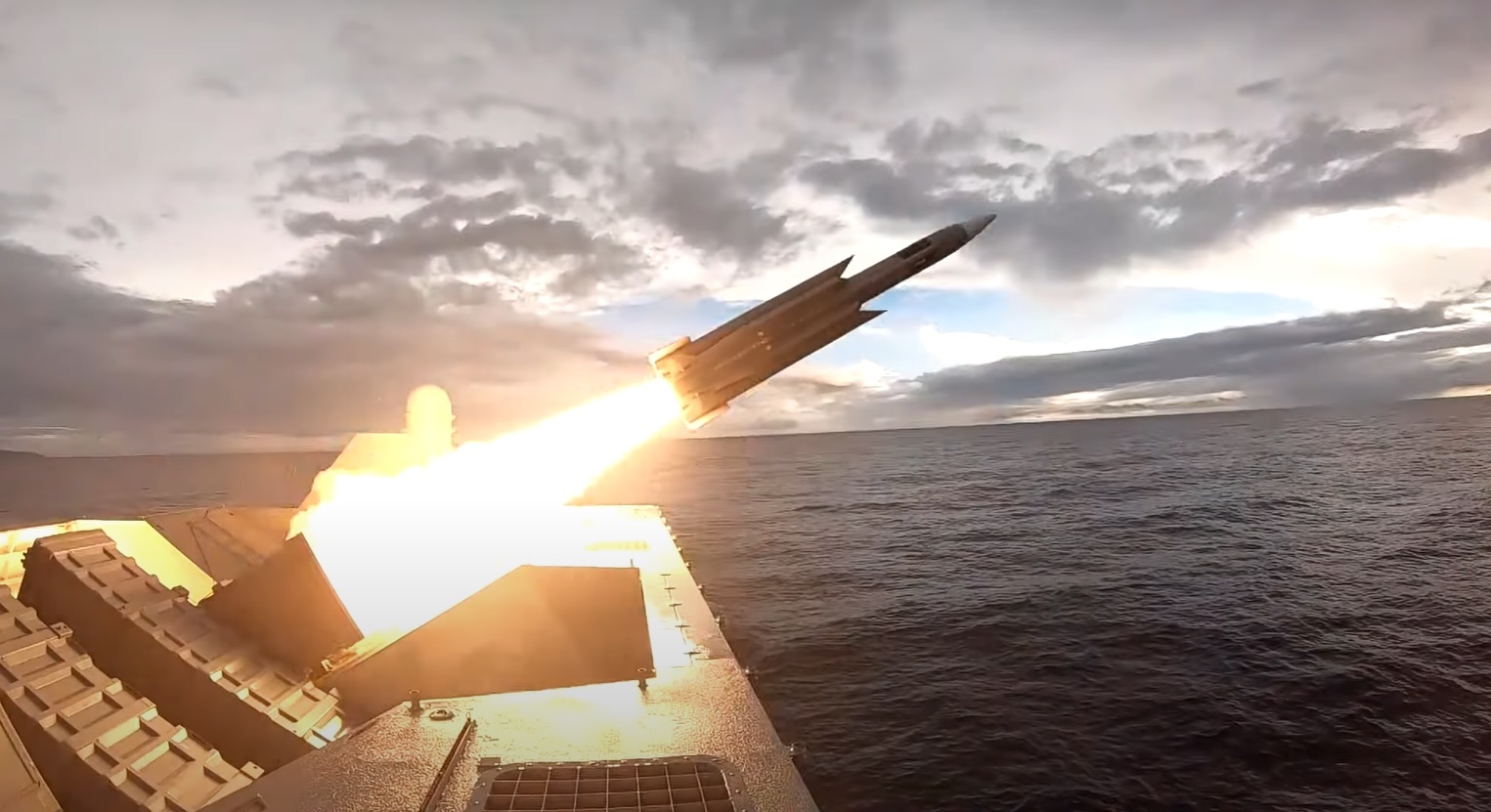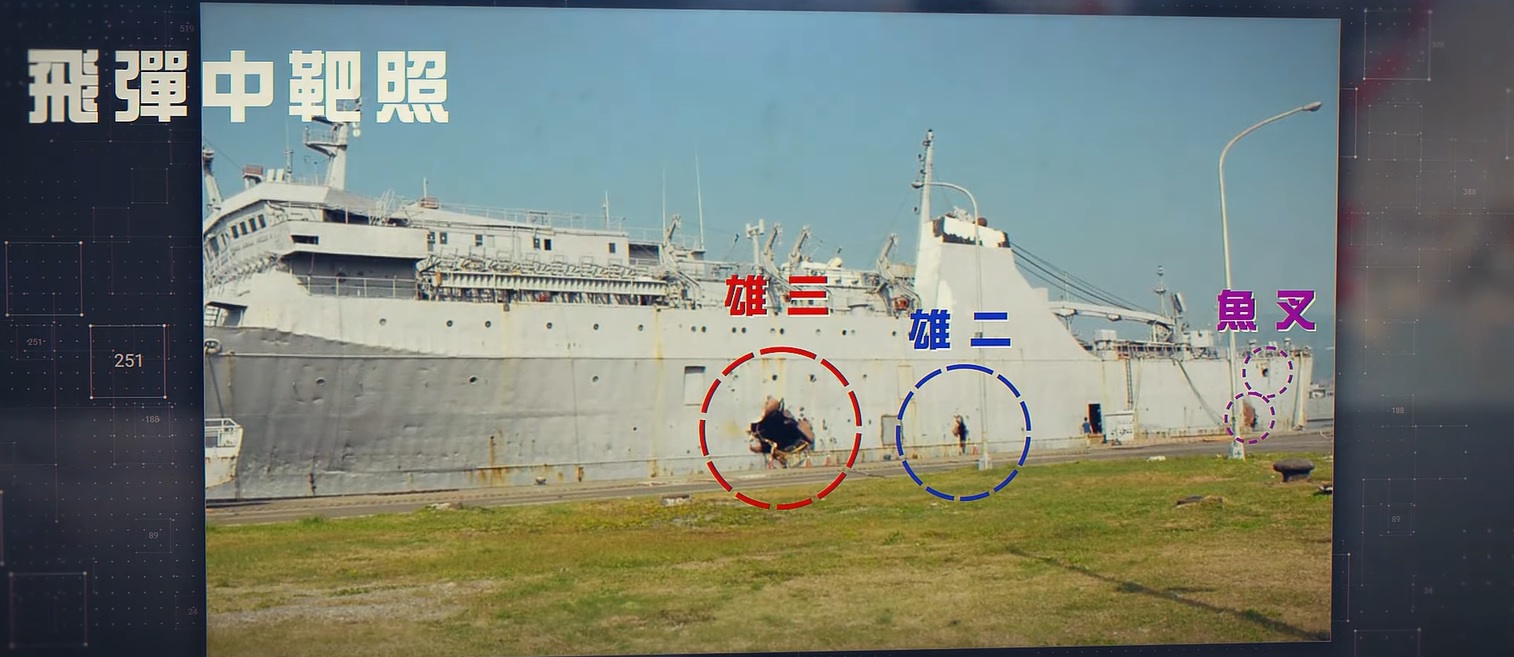Taiwan has released videos of its Hsiung Feng series of anti-ship missiles (AShM) being fired and hitting target vessels in a signal to China of its capabilities and intent to use force on People’s Liberation Army – Navy (PLAN) warships.
The Taiwanese military practice drills come when China performs an “unprecedentedly large carrier group” exercise.
The Hsiung Feng II and III missiles are the Republic of China (RoC) Navy’s most advanced and the mainstay of their anti-shipping arsenal. Pictures show three holes punched in the retired warship by the HF-II, III, and a US-made Harpoon AShM.
This showcases military preparedness, quite unusual for Taipei, though it has been consistently up-gunning its military while receiving a steady arms supply from Washington.
Early in July, Taiwan’s Ministry of National Defense (MND) announced hiking production of its homegrown AShM platforms, according to a report in the Taipei Times, which includes the HF-III, an extended-range variant of the HF-II.
China’s massive drills, meanwhile, come close on the heels of the United States conducting a series of military exercises across the region in recent weeks with Japan, Australia, and the Philippines. The American and Canadian navies sailed ships through the Taiwan Strait on Saturday.
Japan & Taiwan Watching Chinese Drills
Japanese and Taiwanese militaries observed guided missile destroyers, frigates, supply ships, and fleet replenishment tankers. The latter’s Ministry of National Defense (MND) also identified 68 warplanes near Taiwanese airspace on September 14, some of which joined the exercises. Aircraft were also spotted operating off the Shandong aircraft carrier.

On September 13, the Taiwanese defense ministry tracked 35 Chinese warplanes, including J-10 fighters, around the island early that day. About 28 flew into the southwestern corner of the island’s air defense identification zone (ADIZ).
In the intervening hours of the last two days, social media posts observed a People’s Liberation Army – Navy (PLAN) Type 055 destroyer ‘Yanan,’ Type 052D destroyer ‘Hefei,’ and a submarine attached to the Southern Theater Command sail into the South China Sea (SCS) “during a coordinated offensive and defensive training drill in a real-combat environment.”
By September 14 afternoon, Taiwan’s MND had announced “detecting 18 sorties of Chinese Communist Party’s (CCP) J-10 and drones and other types of ships going out to sea.” Thirteen of them crossed Taiwan’s central (or ‘median line’), entered its southwest airspace, and “cooperated with surface ships” while conducting “joint sea and air training.” It also released a video showing the RoCN’s Cheng Ho frigate monitoring the PLAN’s 052C destroyer ‘Jinan.’’
On September 13, the MND released another image of the RoCN destroyer Kee Lung monitoring the PLAN carrier Shandong in the waters east of Taiwan. EurAsian Times has touched upon how PLA exercises around the island became markedly comprehensive, specifically following former US Speaker Nancy Pelosi’s visit in August 2022.
Chinese Military Rehearsals
The retaliatory live-fire drills at six spots around the island following Pelosi’s visit saw several operational firsts. This included launching missiles over the island into its eastern seaboard, flying drones around the entire island, and employing the J-20 stealth fighter for the first time.
For the last few months, it has also held naval drills off the island’s east, unlike previous instances where drills were only held off Taiwan’s western coast.

Taiwan, therefore, based its defensive plans and operations on retreating to the East, close to the mountains, and fighting off a Chinese invasion by storing its ammunition and the bulk of the fighting forces in the mountainous terrain. Naturally, it would have also envisaged receiving supplies logistics on the eastern coast from US and allied forces to fight off the Chinese who would have amassed on the western coast and lands.
PLAN, now exercising even in the East, has upturned that strategy, as it can fully surround the island and enforce a blockade, presenting a fait accompli of an eventual creeping amphibious land invasion to the defending Taiwanese. In theory, Taipei should surrender and officially accede to the mainland, as the bloodless military takeover also suits Beijing’s other economic and diplomatic calculations.
Taiwan Navy’s Subtle Hint to PLAN in a Video
Meanwhile, the National Chung-Shan Institute of Science and Technology (NCSIST) video shows road-mobile launchers carrying the HF-II and HF-III missiles. The Harpoon is shown being fired from a naval warship and the land launcher. It is unclear if two Harpoons were fired or if the one fired from the warships was a previous launch made part of this publicity material.
Footage of an overhead drone with a targeting reticule captures the Harpoon hitting the rear and the HF-II and HF-III striking the middle sections. Subsequent photos showed three holes on the target ship, color-coded to mark the left, center, and right-most holes punctured on the vessel’s hull to be made by the HF-III, HF-II, and Harpoon missiles.
Chinese Naval Drill Is Massive
A Global Times report, quoting a Japan Maritime Self-Defense Force (JMSDF) claim, said it spotted eight PLAN warships that sailed from the East China Sea (ECS) in two flotillas through the Miyako Strait into the western Pacific on September 11. This task force consisted of two Type 052D destroyers, two Type 054A frigates, and a Sovremenny-class destroyer in a first flotilla. The second flotilla comprised a Type 052C destroyer, a Type 052D destroyer, and another Sovremenny-class destroyer.
The eight Chinese vessels’ voyage from the East China Sea into the West Pacific coincided with the Shandong aircraft carrier group’s entry to the same region on the same day from the South China Sea. While the Shandong carrier group was 60 nautical miles southeast of Cape Eluanbi, the southernmost part of the Taiwan island, the other warships spotted by the JMSDF that sailed from the ECS might not have necessarily been part of the carrier’s flotilla.
Nevertheless, even if the warships do not join the carrier group, they still would be “operating in a coordinated manner as a part of the Shandong’s far sea exercise,” according to an unnamed expert quoted in the GT report. “Either situation would mean that the aircraft carrier Shandong is practicing new skills and tactics to enhance its combat capabilities,” the report added.
- The author can be reached at satamp@gmail.com
- Follow EurAsian Times on Google News




